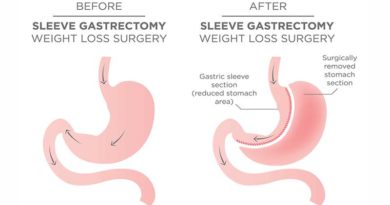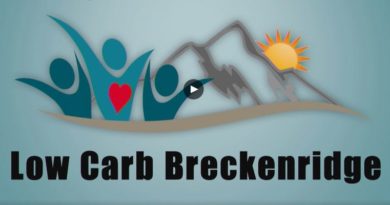Eatwell Guide – BJSM Editorial
This editorial in the British Journal of Sports Medicine has just been published (23.30 Monday June 13th 2016). The title is “Designed by the food industry for wealth, not health: the ‘Eatwell Guide.’”
The key points are:
1) Our advice is being tweaked; it needs to be overhauled.
The UK has had plate pictures intended to represent role model healthy eating since the Balance of Good Health Diagram (1994). This was relaunched as the ‘Eatwell’ Plate in 2007 and it has been relaunched again (March 2016) as the ‘Eatwell’ Guide.
Many of the recent changes have been cosmetic. Details of cosmetic and the segment size changes can be found here.
2) The plate proportions don’t allow for the difference between food weight and calories.
The plate has (perhaps unintended) consequences. The editorial notes that the segment sizes might be 37% “Potatoes, bread, rice, pasta and other starchy carbohydrates”; 39% “Fruit and vegetables”; 8% “Dairy and alternatives” (soya basically); 12% “Beans, pulses, fish, eggs, meat and other proteins”; 1% “Oils & spreads”; and 3% junk food, but this is by weight. When the vast difference between, say, the c. 40-50 calories for 100 g of fruit and vegetables and the c. 800 calories per 100 g of oils & spreads is taken into account, the plate proportions change dramatically.
I explained this here, with reference to the Eatbadly Plate – the same principles apply to the Eatbadly Guide – only the numbers on the segments have changed.
3) The group, set up by Public Health England, to review and revise the Eatbadly Plate was dominated by representatives of the fake food industry.
What on earth is Public Health England doing setting up such a group? What does the Association for Convenience Stores representative know about diet and nutrition?! Why did the two least conflicted group members not attend any meetings after the first one?
4) The guide is not evidence based.
The guide is very specific in proportions, without seemingly knowing the consequence of these proportions (point 2 above). I said in the editorial “There has been no randomised controlled trial (RCT) of a diet based on the Eatwell Plate or Guide, let alone one large enough, long enough and with whole population generalisability.”
Professor Tom Sanders is a regular writer for the Science Media Centre. When a press release is issued by medical journals, the SMC mobilise to counter the article (maybe just the ones they don’t like). (Or rather – maybe the ones that their food, pharma and other funders don’t like). Sanders’ comment on my editorial was: “The claim made that the dietary guidelines are not supported by randomised controlled trials (RCT) is plainly wrong. The Food Standards Agency and later Public Health England commissioned several large RCTs to underpin current dietary guidelines and I was involved in leading several of these.” He quoted this Reidlinger/Sanders et al study.
It won’t take you long to notice that this is not a study of the ‘Eatwell’ Plate or Guide. It makes no mention of either. There is no attempt to make the intervention diet match the ‘Eatwell’ segments, let alone the proportions. It’s not even a test of the 55% carb/15% protein/30% fat Dietary Reference Values for the UK, since the diet group ended up at 45% carb/18% protein/33% fat (rounding errors). It also wasn’t large enough (160 people) or long enough (12 weeks). It was a study of surrogate end points, not real health outcomes. The control group was not a control group, as in left alone/left as baseline. The control group diet “was based around refined cereals”, “without restriction on salt and sugar”, but “with a limited intake of oily fish (less than once a month).” Incredibly the ‘control’ participants “were supplied with a butter-based spread (35.3 g SFAs/100 g and 2.4 g trans fatty acids/100 g) and a liquid unhydrogenated vegetable oil (palm olein) that contained 40% SFAs.” Crikey – I’m surprised they survived the trans fats alone! Oh, and Sanders declared of himself: “TABS is a trustee and governor of the British Nutrition Foundation and reported a financial interest in respect of payment for attendance at scientific advisory panels for Heinz PLC [ZH – both diet and ‘control’ group were supplied with baked beans!], Global Dairy Platform, Malaysian Palm Oil Board and the Natural Hydration Council, and GlaxoSmithKline and lecture fees from Lilly.”
I emailed Sanders to request details of the “several large RCTs to underpin current dietary guidelines.”He kindly replied by return with the Reidlinger/Sanders study top billing and then this study by Jebb et al. This also had nothing to do with the Eatbadly Plate/Guide, didn’t test for the five segments, let alone precise proportions. It was a comparison of five variations of high and low glycaemic index carbs matched with high saturated fat or high monounsaturated fat or low fat. It studied 548 people at risk of the metabolic syndrome for 24 weeks, so not generalisable even if it had studied the Eatbadly Plate/Guide. It also concluded: “This study did not support the hypothesis that isoenergetic replacement of SFAs with MUFAs or carbohydrates has a favorable effect on Si [insulin sensitivity].” So why send me this?!
I replied “Many thanks for these – was it just the two?” and Sanders came back with “There are more – I just gave two of the ones that are more relevant.”
No need to change this therefore: “There has been no randomised controlled trial (RCT) of a diet based on the Eatwell Plate or Guide, let alone one large enough, long enough and with whole population generalisability.”
Enjoy the editorial and many thanks to the BJSM for the opportunity to write it and to the peers, whoever they may be, who reviewed it.





From a personal experience stand point I have to state that the eatwell plate does have (a) good point, As a learning tool, I gave it up and learned enough not to want to revisit it.
My Summer 2016 Osteoporosis news mag just arrived from the National Osteoporosis society, who had also just sent me a reminder to renew my NOS membership. I am planning to write to them, saying why I am hesitating to renew, when they have a big feature endorsing and recommending the Eatwell Plate. (and sending them the link to your article and blogpost.) The article writes: Public Health England recommends ..2 whole wheat cereal biscuits, 2 thick slices of wholemeal bread.. And refers to the Eatwell guide to eat lower fat milks. It quotes Ailsa Welch, Reader in Nutrional Epidiomology at University of East Anglia, as welcoming the revised recommendations.
Alongside the Eatwell feature is a report of a study by MRC Human Nutrion Research (Zoe, have you heard of them?) who have examined records stretching back to 1946 and found women with a diet high in low fat milk.. wholegrain bread, breakfast cereals, fruit and veg and low in added sugars, sweets, processed foods and animal fats, will have stronger bones over age 60. The next page says the Med diet may be good for bones, which it defines as “rich in fruit, veb, fish and whole grains..”
Pingback: Call for UK Eatwell Guide overhaul sparks ‘real food’ debate – FoodNavigator.com | HealtyQu
What is their rationale behind including soya as a food?
That stuff is nasty. The worst smell in the world is a used diaper/nappy of a baby fed on soy formula.
Hi Hugh
Must be all those fake food reps on the panel! They did have an agricultural rep – the AHDB is supposed to represent: Pig meat; Milk; Beef & lamb; Cereals and oilseeds; and Potatoes. Maybe she thought the cereal/spuds and oilseed wins were good – can’t have everything – so poor meat and dairy.
I hear soya and I think Moobs!
Best wishes – Zoe
I won’t touch soya — it doesn’t stay in my system long enough to give me Moobs. Soy sauce I can tolerate on occasion (sometimes you need a little with Chinese food)
But you know what — these EatBadly folks can have all the soya, oilseeds, and cereals. I’ll eat the meat and full-fat dairy that they don’t want.
There’s a nice steak resting comfortably in my fridge along with some courgettes and shallots. Little do they know the terrible fate that await them when I get home from work…
I could never understand how beans and pulses belong to the same food group as eggs and meat.
Hi Galina
They have no clue about food groups either! https://www.zoeharcombe.com/2015/05/food-groups/
Best wishes – Zoe
All is not lost. I met three community based tier 3/4 dietitians recently who all expressed disappointment and dissatisfaction with the Eat Badly plate. They all said the new one was far worse than the old one and that they ignore it. From small seeds………..
Hi Pete
We had similar encouragement at the PHC conference at the weekend – a number of lovely and enlightened dieticians doing real food/keto/low carb – whatever was needed for best health.
Seeds are good! ;-)
Best wishes – Zoe